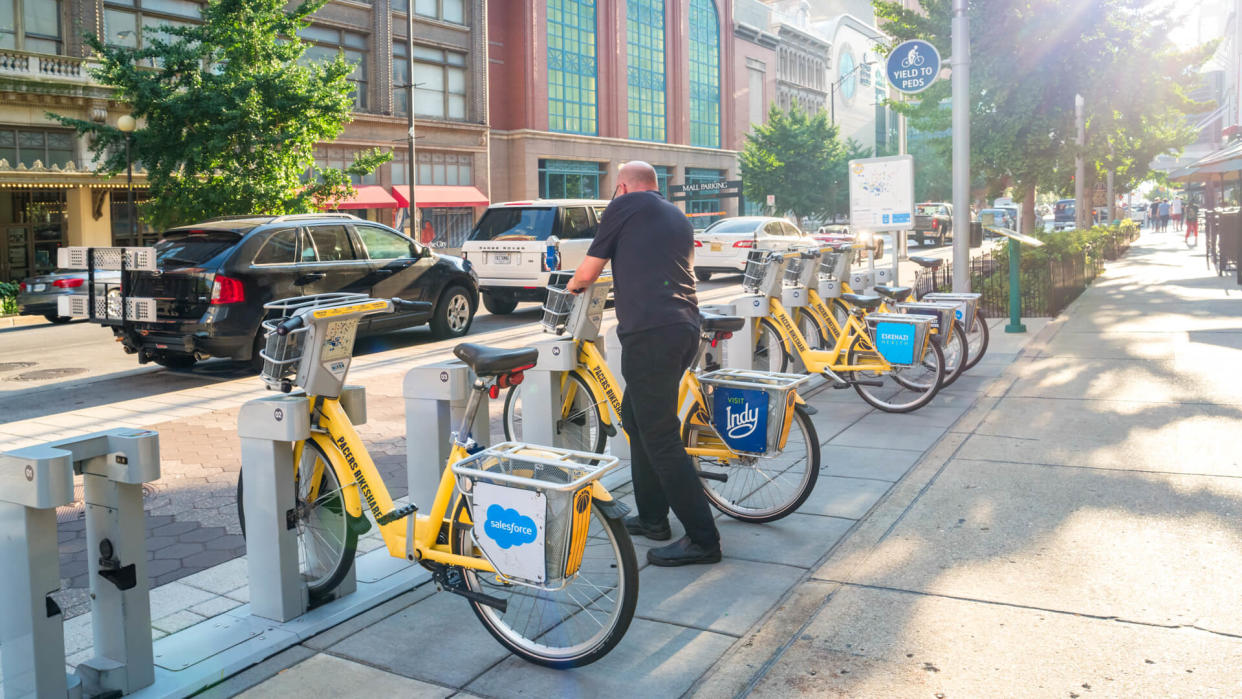The Average Car Payment Is More Than $700: 4 Better Ways To Spend That Money

New car buyers in the United States have entered a whole new realm of sticker shock in recent years due to continually rising prices that seem to have no ceiling, even as the overall inflation rate has declined. The average car payment for new vehicles hit a record high of $738 a month in the fourth quarter of 2023, according to an analysis from LendingTree. If that’s too rich for your blood, there are plenty of better ways to spend that money and still get around.
Check Out: These 12 Cars Can Save You Thousands of Dollars in Repair and Maintenance Costs
Explore More: How To Get $340 Per Year in Cash Back on Gas and Other Things You Already Buy
In its analysis, LendingTree looked at car payments, loan originations, term lengths, delinquencies and other metrics to get a full picture of U.S. auto loan debt and trends. Here are some highlights:
Americans collectively owe $1.607 trillion in auto loan debt, according to the Federal Reserve Bank of New York, accounting for 9.2% of U.S. consumer debt.
On average, Americans took out $55 billion in new auto loans each month in the fourth quarter of 2023.
The average auto loan term is 67.9 months for new cars and 67.4 months for used cars.
Those numbers are not likely to ease anytime soon because once prices go up, they rarely go down. If your budget won’t accommodate a $700-plus car payment — and you can’t pay cash for a vehicle — here are four better ways to spend your money on transportation.
Car Sharing
Car sharing is a popular option in certain cities and suburban areas because the service lets you use a car only when you need it. Shared cars are parked all around town, and you can return them to numerous designated spots without having to deal with paperwork or car rental agents. Companies that offer car sharing include Zipcar, Car2go, Turo and Getaround.
Most car-sharing services charge on an hourly basis and might charge fees for additional miles or time driven, according to a blog from The Zebra. The Zebra, citing Environmental Protection Agency data, reported that U.S. households who use car sharing save a minimum of $154 per month vs. buying a new car. In some households, the savings exceed $400 a month.
Rideshare Services
Depending on where you live, using a rideshare service like Uber or Lyft might be a better use of money than making a car payment — especially if you don’t need to use the services a lot. This strategy mainly works in urban areas where you are walking distance to work and amenities and only need to use a rideshare service every once in a while.
You can expect to pay at least $2 a mile for an Uber ride in most U.S. cities, according to a blog on the Daily Dot website that cited Netcredit research. But the cost is much higher in places like New York, Los Angeles and San Francisco. You can also opt for a subscription if you need to use the service frequently.
Buy or Rent a Bike
One way to save money by forgoing a car payment — while getting exercise at the same time — is to buy or rent a bicycle. Many urban dwellers have traded in four wheels for two wheels and pocketed the savings. You’ll have to deal with the weather (and impatient drivers), but it’s a good option if you live where there are plenty of dedicated bike lanes and the elements are agreeable.
The average cost of a bicycle in the United States was only about $320 as of 2023, according to Statista. That figure is expected to rise by about $10 a year through 2027.
Bikeshare programs have also sprung up in more U.S. cities. As of June 30, 2023, 56 docked bikeshare systems open to the general public operated 8,796 docking stations in the United States, according to U.S. Department of Transportation data.
The nation’s largest bikeshare system, Citi Bike in New York City, charges $19 a day or $219.99 a year for its flagship program, according to its website. Charlotte JoyRides in Charlotte, N.C., charges $50 for a monthly membership and $150 for a yearly membership.
Public Transit
If you don’t mind sharing a bus or train with other passengers, then public transit can get you where you need to go much cheaper than making the average car payment. Bus and/or train passes in big cities like New York, Chicago, Philadelphia, San Francisco, Minneapolis and Los Angeles typically ranged from around $65 to $130 a month as of 2022, The Motley Fool reported. Many passes give you unlimited access to all municipal transit services when they are in operation.
More From GOBankingRates
This article originally appeared on GOBankingRates.com: The Average Car Payment Is More Than $700: 4 Better Ways To Spend That Money
